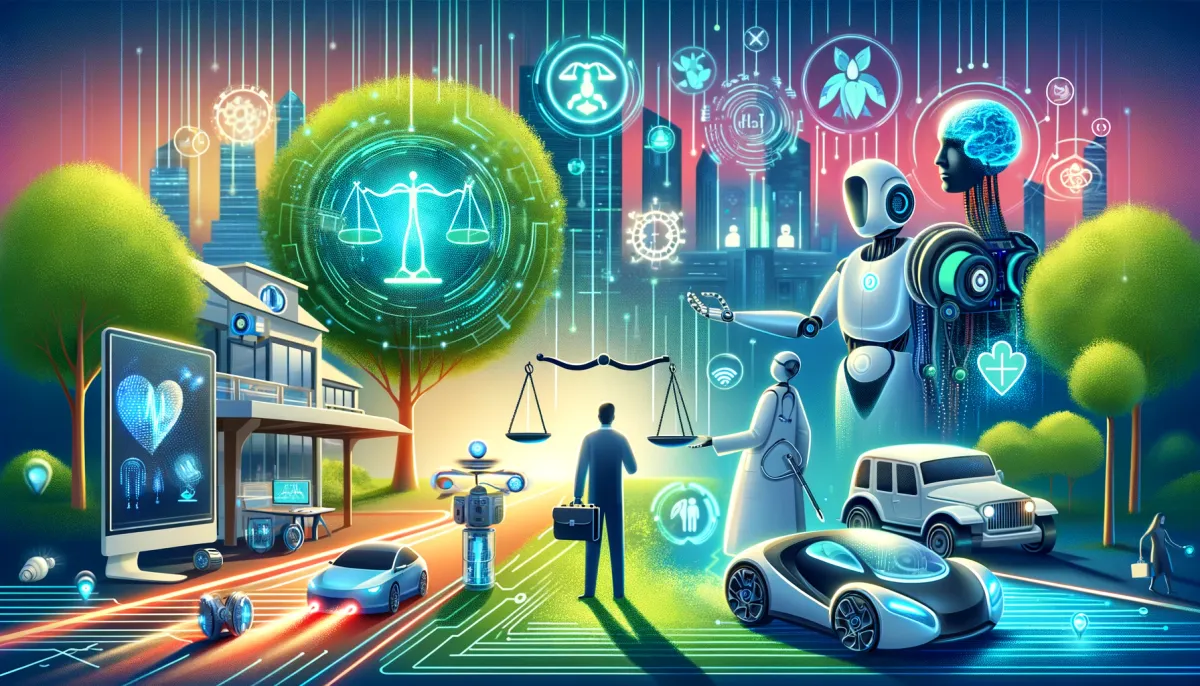The Latest Trends in AI and Machine Learning: A Comprehensive Overview

Artificial Intelligence (AI) and Machine Learning (ML) are fields in constant evolution, reshaping industries, and redefining possibilities across the globe. As we move further into 2024, several key trends are emerging, each promising to push the boundaries of what these technologies can achieve. Let's delve into the latest trends in AI and Machine Learning, exploring how they are transforming various sectors and what the future holds.
1. Generative AI and Creative Machines
Generative AI has taken a significant leap forward, with models like OpenAI's GPT-4 and Google's LaMDA showcasing unprecedented capabilities in generating human-like text. These models are not only excelling in natural language processing but are also venturing into creative domains such as art, music, and video generation. Tools like DALL-E, which creates images from textual descriptions, are revolutionizing creative industries by enabling new forms of artistic expression and content creation.
2. Explainable AI (XAI)
As AI systems become more integrated into critical decision-making processes, the need for transparency and explainability is paramount. Explainable AI (XAI) focuses on making the decision-making process of AI systems understandable to humans. This trend is particularly crucial in sectors like healthcare, finance, and legal systems, where understanding the rationale behind AI decisions can foster trust and ensure compliance with regulatory standards. Techniques such as SHAP (SHapley Additive exPlanations) and LIME (Local Interpretable Model-agnostic Explanations) are gaining traction, helping to demystify complex models.
3. AI in Healthcare
AI's impact on healthcare continues to grow, with advancements in diagnostic tools, personalized medicine, and drug discovery. AI-driven diagnostic systems are achieving higher accuracy rates in detecting diseases such as cancer, often outperforming human experts. Personalized medicine, powered by AI, is enabling more tailored treatment plans based on individual genetic profiles and health data. Additionally, AI is accelerating drug discovery by predicting molecular structures and their interactions, significantly reducing the time and cost associated with bringing new drugs to market.
4. Edge AI
Edge AI refers to the deployment of AI algorithms on devices at the edge of the network, closer to where data is generated. This trend is driven by the need for real-time processing and decision-making in applications like autonomous vehicles, smart cities, and IoT (Internet of Things) devices. By processing data locally, Edge AI reduces latency, enhances privacy, and minimizes the reliance on cloud infrastructure. The development of more efficient, low-power AI chips is facilitating this shift, making it feasible to run sophisticated AI models on smaller, edge devices.
5. Federated Learning
Federated Learning is transforming how AI models are trained by enabling decentralized learning across multiple devices without sharing raw data. This approach addresses privacy concerns by keeping data on local devices and only sharing model updates. Federated Learning is particularly relevant in industries such as healthcare and finance, where data privacy is critical. It allows for the collaborative training of AI models while preserving data security and privacy, paving the way for more robust and inclusive AI solutions.
6. Ethical AI and Bias Mitigation
As AI systems become more pervasive, the ethical implications of their deployment are coming under greater scrutiny. Ensuring that AI systems are fair, unbiased, and ethical is a growing concern. Researchers and practitioners are developing frameworks and tools to identify and mitigate biases in AI models. Ethical AI initiatives focus on creating guidelines and standards for responsible AI development, emphasizing transparency, accountability, and inclusivity.
7. AI for Sustainability
AI is playing a pivotal role in addressing environmental challenges and promoting sustainability. From optimizing energy consumption in smart grids to monitoring deforestation and predicting climate change impacts, AI technologies are being harnessed to protect the planet. AI-driven solutions are enabling more efficient resource management, reducing waste, and supporting sustainable practices across various industries.
8. Autonomous Systems and Robotics
Autonomous systems, including drones, robots, and self-driving cars, are becoming more sophisticated and capable. Advances in AI and ML are enhancing the autonomy and reliability of these systems, enabling them to perform complex tasks with minimal human intervention. In sectors like agriculture, logistics, and manufacturing, autonomous systems are improving efficiency, reducing costs, and addressing labor shortages.
9. AI in Natural Language Processing (NLP)
Natural Language Processing (NLP) continues to evolve, with AI models achieving remarkable fluency and understanding of human language. Applications such as chatbots, virtual assistants, and language translation services are becoming more intuitive and capable of handling complex interactions. NLP advancements are also facilitating more effective sentiment analysis, enabling businesses to better understand customer feedback and improve their services.
10. AI and Cybersecurity
The integration of AI in cybersecurity is enhancing the ability to detect and respond to threats in real-time. AI algorithms are being used to identify patterns and anomalies in network traffic, detect malware, and predict potential security breaches. By automating threat detection and response, AI is helping to safeguard sensitive data and infrastructure from cyber-attacks.
Conclusion
The latest trends in AI and Machine Learning are indicative of a future where these technologies will continue to play a transformative role in our lives. From enhancing creativity and healthcare to promoting sustainability and improving cybersecurity, the potential applications of AI and ML are vast and varied. As we move forward, it is crucial to address the ethical and societal implications of these technologies, ensuring that they are developed and deployed in a manner that benefits all of humanity. The journey of AI and Machine Learning is just beginning, and the innovations on the horizon promise to reshape our world in ways we can only imagine.